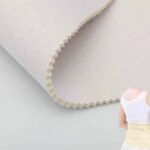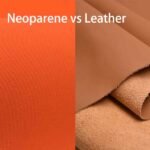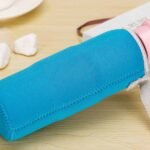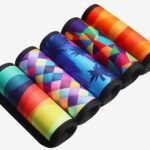Over the past decade, neoprene shirts have gained a reputation as both fitness gear and water sports essentials. From gym-goers hoping to sweat more to surfers braving cold waves, these snug-fitting tops promise insulation, durability, and even weight-loss benefits. But behind the hype, the question remains: do neoprene shirts actually work?
Yes, neoprene shirts work, but their effectiveness depends on the purpose. For water sports, they provide warmth, buoyancy, and protection against cold. For fitness, they increase sweating, which may aid temporary water weight loss, but they do not directly burn fat. Their real value lies in insulation, durability, and support, making them useful across sports, fitness, and recreational activities.
The story of neoprene shirts is layered. Athletes praise them for thermal comfort, while some critics dismiss their role in fat loss. A swimmer in chilly waters may say their neoprene shirt saved the session, while a fitness enthusiast might claim it accelerated weight loss — only to realize results were short-lived. To fully understand whether neoprene shirts work, we need to break down their science, benefits, limitations, and buying considerations.
What Are Neoprene Shirts and How Do They Work?

Neoprene shirts are tops made from polychloroprene, a synthetic rubber known for insulation and flexibility. They work by trapping body heat and preventing cold water or air from lowering body temperature. In fitness, they increase sweating by creating a “sauna effect,” while in water sports, they provide thermal protection and buoyancy.
A neoprene shirt is essentially a garment designed to balance performance and protection. Unlike cotton or polyester shirts, which breathe and wick moisture, neoprene shirts are engineered to retain warmth and minimize heat loss, making them unique in both fitness and aquatic settings.
Material Composition
- Base Material: Neoprene (polychloroprene), a closed-cell synthetic rubber.
- Structure: Tiny nitrogen bubbles within the neoprene act as insulators, much like double-pane windows trap air for warmth.
- Lamination: Often bonded with fabrics like nylon, polyester, or spandex for durability, flexibility, and style.
How They Work in Water Sports
- When worn in cold water, neoprene shirts trap a thin layer of water between the skin and fabric.
- The body heats this water, creating a protective thermal barrier.
- This function is similar to wetsuits, though shirts are lighter and often paired with swim trunks or leggings.
How They Work in Fitness
- The non-breathable structure of neoprene prevents heat from escaping.
- As the body warms up, the shirt induces sweating, creating what’s commonly known as a “sauna effect.”
- Increased perspiration leads to short-term water weight loss, but does not equate to fat burning.
Added Benefits
- Compression: Provides mild support to muscles and joints.
- Protection: Shields skin from abrasions, UV rays, and irritants.
- Buoyancy: Offers slight flotation benefits, useful for beginner swimmers.
Here’s a quick breakdown:
| Use Case | Function of Neoprene Shirt | Outcome |
|---|---|---|
| Water Sports | Traps heat, insulates, resists cold water | Warmth, buoyancy, longer swim/surf time |
| Fitness/Workout | Retains body heat, increases sweating | Temporary water weight loss, more sweating |
| Daily/Outdoor | Protection against UV, abrasions, wind | Skin safety, comfort in variable weather |
In short, neoprene shirts “work” — but what they work for depends on the context. They are excellent at keeping the body warm and encouraging perspiration but are not magic tools for fat loss.
Do Neoprene Shirts Really Help with Weight Loss and Sweating?

Neoprene shirts increase sweating and may cause temporary water weight loss, but they do not directly burn fat. The “sauna effect” leads to higher perspiration during workouts, which can make users feel slimmer short-term. For lasting weight management, diet and exercise are more important than sweating alone.
One of the biggest selling points of neoprene shirts in fitness markets is their ability to make you sweat more. Promoted as “sauna shirts” or “sweat-enhancing tops,” they promise to accelerate calorie burn and weight loss. But how accurate are these claims?
The Science of Sweating
Sweating is the body’s natural cooling mechanism. When you exercise in a neoprene shirt, the fabric traps heat and prevents evaporation, causing the body to sweat more. The increased perspiration results in water loss, not fat reduction. Once you rehydrate, your weight will return to baseline.
The Myth vs Reality of Fat Loss
- Myth: Wearing neoprene shirts melts fat faster.
- Reality: Sweating alone does not increase fat oxidation. Fat loss requires a caloric deficit created through diet and sustained exercise.
- Benefit: The extra sweat can make muscles appear more toned temporarily and may help users feel lighter before events or competitions.
Potential Advantages
- Motivation: Some users find the visible sweat rewarding, boosting workout intensity.
- Warm-Up: The retained heat can loosen muscles quickly, reducing the risk of injury.
- Short-Term Results: Athletes in combat sports (e.g., wrestling, boxing) sometimes use neoprene shirts to cut water weight before weigh-ins.
Limitations and Risks
- Dehydration: Excessive sweating without hydration leads to electrolyte imbalances.
- Overheating: Prolonged use may increase risk of heat exhaustion.
- Skin Issues: Extended moisture can cause irritation if the shirt is not properly cleaned.
In conclusion, neoprene shirts “work” in the sense that they intensify sweating and may help with short-term water weight reduction. However, they are not a substitute for structured fitness and nutrition programs.
Which Benefits Do Neoprene Shirts Offer for Fitness and Water Sports?

Neoprene shirts provide insulation in cold water, buoyancy for swimmers, UV and abrasion protection, and muscle support. In fitness, they increase sweating, help muscles warm up faster, and add mild compression for joint stability. These combined benefits make neoprene shirts versatile for both athletes and casual users.
Neoprene shirts are popular because they serve a dual purpose: enhancing workouts on land and providing protection in aquatic environments. Their value lies not in one exaggerated claim but in a collection of practical benefits.
1. Thermal Insulation in Water
- Neoprene is a closed-cell material with tiny nitrogen bubbles that trap heat.
- A neoprene shirt keeps the body warm by slowing down heat loss, which is crucial for divers, surfers, and swimmers in cooler waters.
- This insulation extends the time athletes can spend in the water without discomfort.
2. Buoyancy and Safety
- The nitrogen-filled structure also provides mild buoyancy.
- While not a replacement for life vests, neoprene shirts help beginner swimmers stay afloat with less effort.
3. Protection from External Elements
- UV Protection: Many neoprene shirts block harmful UV rays, reducing the risk of sunburn during long hours outdoors.
- Abrasion Resistance: Protects skin from surfboards, kayak straps, or rocky shorelines.
- Environmental Barriers: Shields against jellyfish stings or minor scrapes.
4. Benefits for Fitness Training
- Sweating & Sauna Effect: Intensifies perspiration for water weight loss.
- Warm-Up Efficiency: Retains heat, helping muscles loosen faster and reducing injury risk.
- Compression Support: Provides gentle pressure on muscles and joints, aiding stability and reducing post-workout soreness.
5. Psychological Boost
- Feeling warm and supported encourages athletes to push harder.
- For fitness enthusiasts, the visible sweat can act as a motivational tool.
Benefits Overview Table:
| Benefit Area | Function of Neoprene Shirt | Key Outcome |
|---|---|---|
| Water sports | Thermal insulation, buoyancy | Longer swim/surf time, comfort |
| Outdoor use | UV and abrasion protection | Safer skin, less irritation |
| Fitness workouts | Sauna effect, heat retention | Temporary water weight loss |
| Muscle support | Mild compression | Reduced fatigue, better stability |
In both fitness and water sports, neoprene shirts deliver practical, multi-layered benefits, making them a worthwhile investment for athletes, hobbyists, and brand-conscious consumers alike.
How Do Neoprene Shirts Compare to Other Workout or Swimwear Materials?

Compared to spandex, polyester, and lycra, neoprene shirts excel in insulation, buoyancy, and water resistance but are less breathable. They’re ideal for cold water and sweat-enhanced workouts, while lighter fabrics are better for comfort, quick drying, and everyday wear. The choice depends on activity and environment.
While neoprene shirts have unique strengths, they are not the only option for activewear or water sports gear. Fabrics like spandex, lycra, and polyester dominate traditional fitness apparel and swimwear. To decide whether neoprene is the right choice, it’s important to compare these materials side by side.
1. Neoprene vs. Spandex/Lycra
- Spandex/Lycra: Known for flexibility and comfort. Breathable and lightweight, making them ideal for gym workouts or competitive swimming.
- Neoprene: Provides superior insulation and buoyancy but is heavier and less breathable. More suited to surfing, diving, and sweat-enhanced workouts rather than high-intensity cardio in hot conditions.
2. Neoprene vs. Polyester
- Polyester: Quick-drying, UV-resistant, and inexpensive. Widely used in swimsuits and rash guards.
- Neoprene: Outperforms polyester in heat retention and protection against abrasions, but dries slower and costs more.
3. Neoprene vs. Cotton
- Cotton: Comfortable for casual wear but absorbs water and loses shape. Not practical for water sports or sweaty workouts.
- Neoprene: Retains structure, resists water, and provides protection — but sacrifices the soft comfort of cotton.
4. Cost & Durability
- Neoprene shirts generally cost more than standard gym wear due to specialized material and lamination.
- However, they last longer in rugged conditions, especially in water sports, where spandex or polyester fabrics degrade quickly.
Comparison Table:
| Material | Strengths | Weaknesses | Best Use Case |
|---|---|---|---|
| Neoprene | Insulation, buoyancy, abrasion resistance | Heavy, less breathable, higher cost | Surfing, diving, sauna workouts |
| Spandex/Lycra | Flexibility, lightweight, breathable | Minimal insulation, less durable | Gym wear, competitive swimwear |
| Polyester | Quick-dry, UV-resistant, affordable | Less warmth, can pill over time | Rash guards, summer swimwear |
| Cotton | Comfortable, breathable | Absorbs water, loses shape | Everyday wear, light exercise |
In summary, neoprene shirts are not meant to replace conventional workout gear but to specialize in conditions where heat retention, buoyancy, or protection matter most.
Are Neoprene Shirts Safe and Comfortable to Wear for Everyone?
Neoprene shirts are generally safe and comfortable, offering warmth, protection, and flexibility. However, some users may experience skin irritation, overheating, or discomfort due to limited breathability. Latex-sensitive individuals should confirm the product is latex-free. Proper sizing and short-duration use make neoprene shirts safe for most people.
While neoprene shirts provide multiple benefits, it’s important to assess safety and comfort factors before widespread use. Comfort varies by individual, and some people may find neoprene less forgiving than traditional workout fabrics.
1. Skin Sensitivity and Allergies
- Pure neoprene does not contain natural rubber latex, but some adhesives used in lamination may.
- People with latex allergies should check product specifications or request confirmation from suppliers.
- Prolonged sweating under non-breathable material can also cause mild rashes or irritation.
2. Heat and Breathability
- Neoprene’s non-porous structure limits airflow. While this boosts insulation and sweating, it also raises the risk of overheating.
- Safe use requires monitoring hydration and avoiding extended workouts in hot environments.
3. Comfort and Fit
- Neoprene shirts are designed to fit snugly. An incorrect size can restrict movement or cause chafing.
- Choosing a thickness suited to the activity (e.g., 1–2mm for fitness, 3–5mm for water sports) improves comfort.
4. Duration of Use
- For workouts, wearing neoprene shirts for 30–60 minutes is typically safe.
- For water sports, sessions of 1–2 hours are common, provided the shirt is dried properly afterward.
5. Maintenance for Hygiene
- Moisture trapped in neoprene can lead to odor or bacterial buildup if not cleaned and dried correctly.
- Proper washing (hand wash, air dry) ensures hygiene and comfort for repeated use.
Comfort & Safety Table:
| Factor | Consideration | Recommendation |
|---|---|---|
| Allergies | Latex-based adhesives possible | Choose certified latex-free neoprene |
| Heat management | Limited breathability | Stay hydrated, avoid hot climates |
| Fit | Snug design may restrict movement | Select correct size and thickness |
| Duration of wear | Extended use may cause overheating | Use for moderate sessions, not all-day |
| Hygiene | Sweat + moisture buildup | Wash after each use, air dry fully |
In conclusion, neoprene shirts are safe and comfortable for most people, provided they are worn correctly, maintained well, and chosen in the right thickness and size.
How Should You Choose the Right Neoprene Shirt for Your Needs?

Choosing the right neoprene shirt depends on activity, thickness, fit, and sleeve style. Thinner shirts (1–2mm) suit fitness and warm water, while thicker options (3–5mm) provide insulation for surfing or diving. A snug but comfortable fit ensures performance, and latex-free materials are best for sensitive skin.
Buying a neoprene shirt isn’t about grabbing the first one you see—it requires aligning your activity, body type, and environment with the product’s features. Here’s what matters most:
1. Thickness
- 1–2mm: Lightweight and flexible, best for fitness workouts, sauna-effect training, or swimming in warm waters.
- 3mm: Balanced insulation and flexibility, good for surfing, snorkeling, or general water sports.
- 4–5mm: Strong insulation, ideal for cold-water diving or extended outdoor exposure.
2. Fit
- Neoprene shirts are designed to fit snugly for insulation and compression.
- Too tight = restricted breathing and movement.
- Too loose = reduced thermal efficiency in water.
- Buyers should refer to brand-specific sizing charts for accuracy.
3. Sleeve Style
- Short Sleeve: Great for workouts or warm-water activities.
- Long Sleeve: Offers added warmth, UV protection, and abrasion resistance in colder conditions.
4. Purpose-Specific Features
- Fitness-Oriented Shirts: Often designed for maximum sweat and may prioritize lightness.
- Water Sports Shirts: Usually laminated with nylon or polyester for durability and quick drying.
- Medical/Support Use: Thicker shirts or vests with compression for back and posture support.
5. Special Considerations
- Latex-Free Construction: Essential for those with allergies.
- Seam Type: Flatlock seams for comfort, glued & blind-stitched seams for water resistance.
- Design/Branding: For businesses, custom printing or logos enhance brand visibility.
Comparison Table – Choosing by Activity:
| Activity | Recommended Thickness | Sleeve Style | Key Features |
|---|---|---|---|
| Gym workouts | 1–2mm | Short sleeve | Sauna effect, flexible, lightweight |
| Warm-water swimming | 1–2mm | Short/long | UV protection, comfort |
| Surfing/snorkeling | 3mm | Long sleeve | Balanced insulation, abrasion-resistant |
| Cold-water diving | 4–5mm | Long sleeve | Maximum insulation, durable seams |
| Medical/posture use | 3–4mm | Varies | Compression, support, latex-free |
By aligning thickness, fit, and features with your activity, you’ll not only improve performance but also extend the lifespan of your neoprene shirt.
Do Neoprene Shirts Require Special Care or Maintenance?
Yes. Neoprene shirts require gentle cleaning and proper drying to maintain performance. They should be hand-washed in cool water with mild detergent, never machine-dried, and air-dried away from direct heat. Proper storage prevents odor, mold, and material breakdown, extending the shirt’s lifespan.
Like wetsuits and other neoprene gear, neoprene shirts need special care. Unlike cotton or polyester, neoprene is a closed-cell synthetic rubber that can degrade if exposed to heat, harsh detergents, or improper storage. Proper maintenance ensures longer lifespan, better hygiene, and consistent performance.
1. Washing
- Hand Wash Only: Use cool or lukewarm water with mild detergent or wetsuit shampoo.
- Avoid Machine Wash: Agitation can stretch seams and fabric laminations.
- No Bleach or Fabric Softener: These chemicals break down neoprene’s elasticity.
2. Drying
- Air Dry Naturally: Hang in a shaded, well-ventilated space.
- Avoid Direct Sunlight: Prolonged UV exposure weakens the fabric.
- No Tumble Dryers or Radiators: Heat causes shrinking and cracking.
3. Storage
- Flat or Wide Hangers: Prevents stretching at the shoulders.
- Avoid Folding for Long Periods: Folds can create permanent creases.
- Keep Ventilated: Store in breathable bags, not sealed plastic.
4. Odor & Mold Prevention
- Always rinse after saltwater or sweat-heavy sessions.
- Ensure the shirt is fully dry before storage.
- For extra care, place a silica gel pack nearby to absorb moisture.
5. Lifespan Extension
- Properly maintained neoprene shirts last 2–4 years with frequent use.
- Poor care can cut lifespan to less than a year, especially with daily workouts.
Maintenance Checklist Table:
| Step | What to Do | What to Avoid |
|---|---|---|
| Washing | Hand wash, mild soap, cool water | Machine wash, bleach, softeners |
| Drying | Air dry in shade, ventilated space | Sunlight, tumble dryers, radiators |
| Storage | Wide hangers, ventilated bag | Folding long-term, sealed containers |
| Post-Use | Rinse sweat/saltwater immediately | Leaving damp in gym bag/car |
By following these steps, you protect both the integrity of the neoprene fabric and the comfort of your workouts or water activities.
Conclusion
Neoprene shirts do work — but their effectiveness depends on what you expect from them. For water sports, they provide warmth, buoyancy, and protection. For fitness, they increase sweating and may assist with short-term water weight reduction, while offering muscle support and faster warm-ups. Compared to traditional fabrics, neoprene shines in insulation and durability, even though it’s less breathable and requires extra care.
Throughout this guide, we’ve covered:
- What neoprene shirts are and how they function.
- Their role in sweating and weight loss — separating myths from facts.
- Key benefits for athletes, swimmers, and fitness enthusiasts.
- Comparisons with spandex, polyester, and cotton.
- Safety, comfort, and choosing the right thickness and fit.
- Maintenance tips to extend their lifespan.
The bottom line? Neoprene shirts are not a magic shortcut to fitness, but they are an excellent investment for sports, outdoor adventures, and brand-focused apparel lines.
At Szoneier, we combine over 18 years of neoprene R&D and manufacturing expertise to create products that balance performance, safety, and style.
Why Choose Szoneier?
- ✅ Custom neoprene shirts with your logo, colors, and design.
- ✅ Low MOQ — flexible for startups and small buyers.
- ✅ Fast sampling & short lead times to support product launches.
- ✅ Certified latex-free neoprene — safe for sensitive users.
- ✅ Comprehensive product line: shirts, wetsuits, bags, koozies, gloves, and more.
- ✅ Global reach, exporting to North America, Europe, and beyond.
Ready to launch your own neoprene shirt line or explore bulk sourcing?
Contact us today at info@neoprene-bag.com or call (+86) 13823134897 for a free consultation and sample.
With Szoneier, you’re not just buying neoprene fabric or shirts — you’re partnering with a trusted factory that delivers innovation, quality, and reliability from concept to final shipment.











